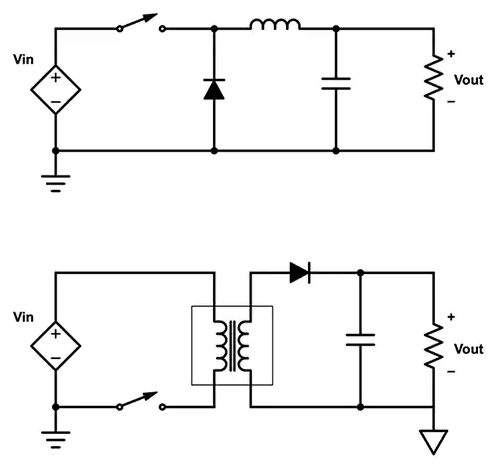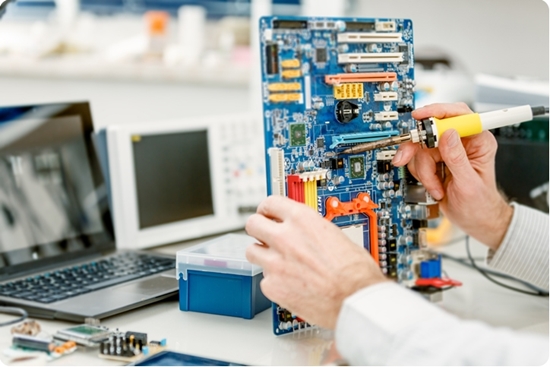ニュース
The Importance of Quality Control in China DC-DC Converter Manufacturing
著者: ZYGパワーモジュール Time: 2023-3-31
Quality control is crucial in every aspect of manufacturing, especially in China DC-DC converter manufacturing. DC-DC converters are devices that convert one voltage level to another and are used in various industries, including automotive, aerospace, medical, and electronics. Quality control ensures that the DC-DC converters meet the required specifications, performance standards, and safety regulations. In this article, we will discuss the importance of quality control in China DC-DC converter manufacturing.
DC-DC Converter Basics
DC-DC converters are devices that convert one voltage level to another. They are made up of several components, including inductors, capacitors, diodes, and transformers. The converter operates by using pulse width modulation to regulate the output voltage as per the input signal. These converters come in various sizes, shapes, and models to meet the different needs of various industries.
Meeting Performance Standards
Quality control plays a vital role in ensuring that DC-DC converters meet the required performance standards. The performance standards include efficiency, output voltage, and ripple current. Manufacturers must adhere to these standards to ensure that the devices perform optimally under various operating conditions. Quality control checks ensure that the devices meet the targeted specifications and standardization requirements of the intended application.

Enhanced Safety
Quality control is critical in enhancing the safety of DC-DC converters. The converters operate at high voltage levels, making it essential to ensure that the devices are safe for use. Quality control ensures that the devices comply with safety regulations, such as electromagnetic compatibility (EMC) standards and thermal management to prevent overheating. Additionally, quality control checks ensure that there are no defects in the converter that could result in a hazard for the end-users.
Minimizing Defects
Quality control helps to minimize the instances of defects in DC-DC converters by identifying any anomalies in the early stages of production. Manufacturers can use various quality control techniques such as Statistical Process Control (SPC) and Failure Mode and Effects Analysis (FMEA) to detect and resolve issues before production starts. By minimizing the number of defects, manufacturers can reduce production costs and improve customer satisfaction.
Product Reliability
DC-DC converters must be reliable to meet the needs of various industries such as defense, aerospace, and medical. Quality control ensures that the devices are reliable by testing them under various conditions to ensure that they can perform optimally under varying environments. Additionally, quality control checks ensure that the devices are durable and can withstand physical and thermal stresses.

Customer Satisfaction
The quality of DC-DC converters is essential in ensuring customer satisfaction. Customers expect products to meet their specific requirements and operate as expected. Quality control checks ensure that the devices meet these requirements, and they are tested to ensure that they perform optimally. By achieving customer satisfaction, manufacturers can build a reputation for providing high-quality products leading to repeat orders and positive word of mouth.
Efficiency and Cost-Effectiveness
Quality control plays a role in improving the efficiency and cost-effectiveness of DC-DC converter manufacturing. By ensuring that the devices meet the required specifications and standards, manufacturers can reduce the number of errors, rework, wastage, and associated costs. Additionally, quality control checks ensure that the production processes are optimized and streamlined for maximum efficiency.
結論
Quality control is crucial in China DC-DC converter manufacturing as it ensures that the devices meet the required specifications, performance standards, and safety regulations. Quality control helps to enhance product reliability, customer satisfaction, and cost-effectiveness of manufacturing. Manufacturers must invest in quality control techniques such as SPC and FMEA to minimize defects and optimize the production process. By doing so, they can ensure that the devices perform optimally under varying conditions and environments. With the increasing demand for DC-DC converters across various industries, manufacturers must strive to provide high-quality products through quality control, ultimately leading to business growth and customer satisfaction.
関連情報
-
2023-6-21
Revolutionizing Illumination: The LED Power Series
Light-emitting diodes or LEDs have been around since the 1960s. In recent years, however, they have become increasingly popular as a source of illumination. LEDs are being used in a wide variety of applications such as traffic signals, automotive lighting, and outdoor lighting. They are also becoming more popular in homes and businesses as a source of general lighting. LEDs have many advantages over traditional incandescent and fluorescent bulbs, including energy efficiency, longer life, and a smaller carbon footprint. In this article, we will discuss the LED Power Series and how it is revolutionizing illumination. The LED Power Series is a line of high-performance LED lights designed for a variety of applications. These lights are engineered to provide maximum efficiency...
詳細を見る -
2023-6-7
China High-Voltage Power Series
High-voltage power series are a vital part of modern electric power systems and are used extensively in various industrial and commercial applications. These devices are designed to provide a stable and reliable flow of electricity at high voltages, and they are used to power heavy machinery and other electrical equipment. The high-voltage power series consists of several different components, all of which are designed to work together to provide a stable and efficient power supply. These components include transformers, circuit breakers, disconnect switches, and surge arresters. Transformers are used to increase or decrease the voltage of an electrical signal. They are critical components in power distribution systems and are used to step up the voltage of the power supply to...
詳細を見る -
2023-5-2
AC-DC コンバータ モジュール: 効率的な電力変換ソリューション
An AC-DC converter module is an electronic device that converts alternating current (AC) power from a mains source to direct current (DC) voltage for use in electronic devices. It is a critical component in electronic devices that require a stable and efficient power supply. The AC-DC converter module comes in various sizes and power ratings, depending on the application. It can be used in a range of electronic devices, including laptops, desktop computers, televisions, and medical equipment. The module has become increasingly popular in recent years due to its high efficiency, compact size, and reliability. One of the key advantages of an AC-DC converter module is its high efficiency. The module is designed to minimize power losses during the conversion...
詳細を見る -
2023-4-15
AC-DC コンバーターは、交流 (AC) を直流 (DC) に変換する電子デバイスです。ほとんどの電子部品は適切な動作のために DC を必要とするため、これは電子回路の一般的な要件です。この記事では、AC-DC コンバーターの作成方法について説明します。ステップ 1: 電圧と電流の要件を決定する AC-DC コンバータを構築するための最初のステップは、アプリケーションの電圧と電流の要件を決定することです。これは、使用している特定の電子部品によって異なります。たとえば、LED に電力を供給する場合、低電圧 (5V など) と低電流 (20mA など) が必要になる場合があります。一方、モーターに電力を供給している場合は、より高い値が必要になる場合があります...
詳細を見る -
2023-6-16
Bidirectional DC DC Converter: Principles and Applications
A bidirectional DC-DC converter is a power converter that can convert DC voltage from one level to another level, in both directions. This type of converter is used in applications such as electric vehicles, renewable energy systems, and energy storage systems, where there is a need for bidirectional power flow. In this article, we will discuss the principles of bidirectional DC-DC converters and their applications. Principles of Bidirectional DC-DC Converters A bidirectional DC-DC converter is a power converter that can operate in two modes: buck mode and boost mode. In buck mode, the converter steps down the input voltage to a lower output voltage. In boost mode, the converter steps up the input voltage to a higher output voltage. The...
詳細を見る -
2023-5-4
Designing an AC-DC Converter Circuit
Introduction An AC-DC converter is a circuit that transforms AC (alternating current) power into DC (direct current) power. This is a necessary function in many electronic devices that require a steady and reliable source of DC power. In this article, we will discuss the design of an AC-DC converter circuit. Design considerations When designing an AC-DC converter circuit, there are several important considerations that need to be taken into account. These include the input voltage, output voltage and current, efficiency, and cost. Additionally, the type of load the converter will be powering must also be considered, as some loads may require a more stable output voltage than others. Input voltage The input voltage of the AC-DC converter circuit will depend...
詳細を見る

















